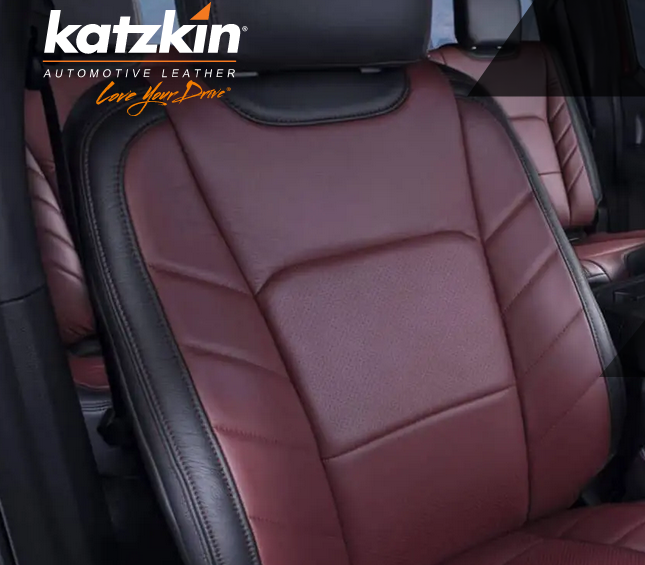Which Cars Use Real Leather? Discover the Luxurious Rides!
Some car brands that use real leather in their vehicles include BMW, Mercedes-Benz, and Audi. Genuine leather adds a luxurious touch to their interiors, offering a premium and comfortable driving experience.
Real Leather In Cars: A Luxury Standard
The allure of real leather in automotive interiors is undeniable. It exudes an aura of luxury and sophistication that synthetic alternatives simply cannot replicate. Real leather is often sought after by car enthusiasts for its premium feel, durability, and timeless appeal.
When it comes to interior design, nothing quite matches the elegance of genuine leather. From seats to steering wheels, consoles to door panels, real leather adds a touch of class to any car’s cabin. It provides a level of comfort and opulence that sets luxury cars apart from their counterparts.
Moreover, leather upholstery in cars is designed to withstand the test of time. Its resistance to wear and tear ensures that it maintains its plush appearance even after years of use. It ages gracefully, developing a unique patina that adds character and charm to the interior.
In addition to its beauty and durability, real leather offers the advantage of being breathable. Unlike synthetic materials, it allows air to pass through, preventing the seats from becoming uncomfortably hot or sticky during warm weather.
Car manufacturers recognize the appeal of real leather, and thus, many luxury and high-end vehicles feature leather interiors as a standard or optional upgrade. Brands like Mercedes-Benz, Audi, and Bentley are known for their extensive use of real leather in their models, ensuring a luxurious driving experience.
Unveiling Luxurious Rides
| Brands renowned for using real leather | Models that exemplify luxury with genuine leather interiors |
|---|---|
| Aston Martin | DB11, Vantage, Vanquish |
| Bentley | Continental GT, Flying Spur, Mulsanne |
| Rolls-Royce | Phantom, Ghost, Wraith |
Luxury car enthusiasts appreciate the feel and aroma of real leather interiors. Several prestigious brands offer this opulent feature, allowing drivers to indulge in the lavishness of their rides. Aston Martin, for instance, is acclaimed for its luxurious and high-performance vehicles such as the DB11, Vantage, and Vanquish, which boast genuine leather interiors.
Bentley also stands out for its commitment to using real leather, which is evident in models like the Continental GT, Flying Spur, and Mulsanne. Rolls-Royce, renowned for its exceptional craftsmanship, ensures that their vehicles like the Phantom, Ghost, and Wraith exhibit the finest quality leather interiors.
Real Leather Vs. Synthetic
Real Leather vs. Synthetic
Real leather has long been associated with luxury and prestige in the automotive industry. Its distinctive smell, soft texture, and natural appearance make it a popular choice among car enthusiasts. However, as consumers become more conscious of environmental and ethical issues, the use of synthetic leather is gaining traction.
| Characteristics of real leather in vehicles |
|---|
| Durability: Real leather is known for its durability, often developing a rich patina over time. It can withstand wear and tear, making it a good choice for long-lasting car interiors. |
| Feel: Real leather provides a luxurious and comfortable feel. Its softness and suppleness add a touch of elegance to any vehicle. |
| Environmental and ethical considerations: While real leather is a natural material, its production requires the use of animal hides. This raises concerns about animal welfare and the carbon footprint associated with the leather industry. Synthetic leather, on the other hand, is made from materials like polyurethane, reducing environmental impact and addressing ethical concerns. |
In the end, the choice between real leather and synthetic leather in cars comes down to personal preferences and values. Each option has its own merits and drawbacks, and it’s important for consumers to weigh these factors carefully.
Craftsmanship In Leather Interiors
When it comes to leather interiors, not all cars are created equal. Some automobile manufacturers prioritize craftsmanship and use real leather for their interiors, while others opt for synthetic alternatives. Real leather provides a luxurious and timeless feel that cannot be replicated. The tanning and treatment process is crucial in ensuring the durability and quality of the leather. By using high-quality hides and employing skilled artisans, top-tier car brands create leather interiors that are supple, soft, and long-lasting.
In addition to the tanning and treatment process, craftsmanship is also evident in the artisanal stitching and design of leather interiors found in select models. Skilled craftsmen pay meticulous attention to detail, resulting in exquisite stitching patterns and intricate designs. These details elevate the overall aesthetics of the interior and create a sense of luxury and sophistication. From hand-stitched steering wheels to custom embossed seats, these top-tier models exhibit the highest level of craftsmanship.
Care And Maintenance Of Leather
Real leather is a popular choice among luxury car manufacturers like BMW, Mercedes-Benz, and Audi. These cars prioritize comfort and style, making real leather an ideal material. To keep it looking its best, regular care and maintenance are essential to prevent cracking, fading, and discoloration.
Best Practices For Preserving Leather’s Luxury Feel
To ensure your leather car seats retain their luxurious feel and appearance, it is important to follow proper care and maintenance practices. Here are some tips to help you preserve the longevity of your leather:
- Regularly clean your leather seats to remove dirt and debris. Use a gentle leather cleaner that is specifically formulated for automotive leather.
- Wipe spills immediately with a clean, damp cloth to prevent staining.
- Avoid exposing your leather seats to direct sunlight for extended periods of time, as this can cause fading and drying out.
- Apply a high-quality leather conditioner every 3-6 months to keep the leather moisturized and prevent it from cracking.
- Invest in seat covers or seat protectors to minimize wear and tear.
- Regularly vacuum your car to remove dust and debris that can settle on the leather.
By following these guidelines, you can prolong the life of your leather car seats and maintain their luxurious look and feel for years to come.
Innovations In Leather Upholstery
Leather upholstery has long been associated with luxury and elegance in the automotive industry. Advancements in treatment for longevity have ensured that leather remains a popular choice for car interiors. These treatments protect the leather from fading, cracking, and stains, ensuring its durability for a long time.
Furthermore, future trends in the luxury automotive industry indicate that manufacturers are aiming to create sustainable and vegan alternatives to leather. This shift is in response to the growing demand for eco-friendly and cruelty-free options.
Several car manufacturers have embraced this change and are using synthetic materials that mimic the look and feel of leather. These alternatives have proven to be equally durable and luxurious, ensuring a comfortable and stylish ride.
The use of real leather in cars is still prevalent among many high-end vehicle brands. However, with changing consumer preferences and advancements in technology, the future of automotive upholstery is gradually moving towards sustainable and vegan options.
The Driving Experience Enhanced
Real leather adds a touch of luxury and sophistication to the driving experience, making it a popular choice for many car enthusiasts. Not only does it look and feel premium, but it also offers superior comfort and durability. The smooth texture and supple feel of genuine leather enhance the overall driving sensation, providing a sense of luxury that cannot be matched by synthetic materials. When seated on a leather-upholstered seat, you can immediately feel the difference in quality and craftsmanship.
Car owners and experts have praised the superiority of real leather in enhancing the driving experience. Many have shared glowing testimonials, emphasizing how real leather elevates the overall feel of the car’s interior. Experts in the automotive industry have also recognized the value of real leather, acknowledging its ability to create a sense of opulence and refinement.
So, if you’re looking for a driving experience that is elevated to new heights, consider choosing a car that incorporates real leather. With its timeless appeal and unparalleled comfort, real leather upholstery is the epitome of luxury behind the wheel.
Frequently Asked Questions Of Which Cars Use Real Leather?
Are Luxury Cars The Only Ones That Use Real Leather?
No, luxury cars are not the only ones that use real leather. Many mid-range and high-end vehicles also use real leather for their interiors, as it provides a premium and luxurious feel.
Why Do Car Manufacturers Use Real Leather?
Car manufacturers use real leather for several reasons. It offers a high level of comfort, durability, and a luxurious look and feel. Real leather also ages well and adds value to the vehicle, making it a popular choice among car manufacturers.
What Are The Alternatives To Real Leather In Cars?
There are several alternatives to real leather in cars. Synthetic leather, also known as faux leather or vinyl, is commonly used as a substitute for real leather. Other options include fabric upholstery, suede, and even sustainable materials like recycled plastics or natural fibers.
Do All Car Seats Use Genuine Leather?
No, not all car seats use genuine leather. Many vehicles offer different options for upholstery material, including leatherette or fabric. It ultimately depends on the trim level and customization choices offered by the car manufacturer.
Conclusion
Overall, it is apparent that a variety of car manufacturers use real leather in their vehicles, including luxury brands like Mercedes-Benz, BMW, and Audi. While the use of real leather may enhance the interior aesthetics and provide a luxurious feel, it is important to consider the ethical and sustainability aspects of this choice.
Additionally, advancements in synthetic materials offer an alternative that mimics the look and feel of real leather, providing a more eco-friendly option. Ultimately, the decision of which cars use real leather rests with the consumer and their personal preferences. Happy car shopping!
- Can I Get in a Taxi Without a Car Seat? - January 26, 2025
- Can I Get Chlamydia From a Toilet Seat? - January 26, 2025
- Can I Get an Uber With a Car Seat? - January 26, 2025






